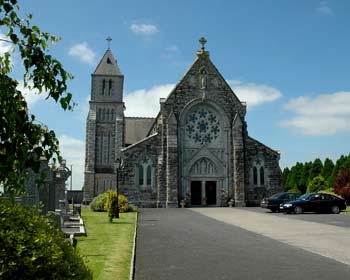The 51st Tidy Towns Awards was announced recently at a ceremony in Dublin and yes it’s official, Emly, in West Co. Tipperary has deservedly been named the tidiest town in Ireland and for the first time.
Emly was the overall national and regional winner with a winning score of 305 points.
Two other Tipperary towns have also won gold awards in this year’s competition, previous winner Birdhill was close behind Emly on 302 points and Clonmel won its category with 290 points.
In North Tipperary Roscrea fared the best of the bigger towns on 270 points, followed by our own Thurles on 258 (Up 7 points on 2008) and Nenagh on 239.
In South Tipperary, Cahir was 30 points behind Clonmel on 260 and followed by Cashel 255 while Carrick-on-Suir scored 254 points.
National Tidy Towns Winner Is Emly Co Tipperary
The winning town of Emly is centered around it’s very beautiful local parish church, dedicated to its patron saint, St. Ailbe. Emly is one of the oldest centres of Christianity in Ireland and up until the early middle ages was the seat of the premier diocese in the south of Ireland remaining a Cathedral city until the 16th century. The full name of Emly in the Irish language is ‘Imleach Iubhair’ which literally means ‘The Border of the Lake of the Yew Trees’. The wood of the English Yew was used for bows by Celtic and Teutonic warriors, a practice which eventually led to the demise of the great Yew forests of Western Europe
St. Ailbe was Bishop of Emly in Munster and died about 528 AD and it is very difficult to sift the truth from the myths and legends which have gathered round the life of this Irish saint. Beyond the fact, which is itself disputed, that he was a disciple of St. Patrick and was probably ordained priest by him, we know really nothing of the history of St. Ailbe. Legend says that in his infancy he was left in the forest to be devoured by the wolves, but that a she-wolf took compassion upon him and suckled him. Many years afterwards, when Ailbe was bishop, a wolf, pursued by a hunting party, fled to the Bishop and laid her head upon his lap. Ailbe recognised and protected this wolf, and every day thereafter she and her cubs came back to be fed by him. It is also believed St. Ailbe loved hospitality and taught his parishioners the importance of same in respect of those who travelled through the area.
Archbishop Thomas Croke, of GAA fame, laid the foundation stone of the present church in Emly on the 30th May 1880. The work was completed in 1882 and officially opened on 6th January 1883. This church replaced an earlier one built in 1810 and which is now used as the towns parish hall. The nearby graveyard contains the towns most famous items of antiquity, St. Ailbe’s Cross and St. Ailbe’s Well, which from ancient times to current date are held in veneration by the the towns inhabitants who still assemble here, on the 12th of September each year, to celebrate the anniversary of St. Ailbe’s death.
Emly also rightfully lays claim to two other notable historical figures, Dermot O’Hurley and Terence Albert O’Brien both of whom were beatified by Pope John Paul II on 27th September 1992.
Dermot O’Hurley (c. 1530 – 1584) was a the Roman Catholic Archbishop of the diocese of Cashel during the reign of Queen Elisabeth 1 and was put to death for treason. Despite severe torture, which included having his legs roasted over a roaring fire, the Archbishop refused to embrace protestantism.
Terence Albert O’Brien (c.1600 – 1651) was a Roman Catholic Bishop of Emly. During the Irish confederate wars O’Brien opposed a peace treaty that did not guarantee Catholic interests in Ireland and following the 1651 siege of Limerick by Ormondists and Parliamentarians, he with others, following their surrender, was executed by General Henry Ireton.
In past years a very ancient canoe, resembling those used by south sea islanders, was dug up in the adjacent bogs near the village, together with gold armlets, ancient coins, and some brass swords.
Tourists, visiting Tipperary, should halt awhile in this area and experience the country-style hospitality which still exists long after St. Ailbe.


Leave a Reply